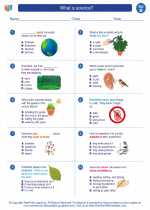Cell Membrane
The cell membrane, also known as the plasma membrane, is a thin semi-permeable membrane that surrounds the cytoplasm of a cell. It separates the interior of the cell from the outside environment and plays a crucial role in maintaining the cell's homeostasis.
Structure of the Cell Membrane
The cell membrane is primarily composed of phospholipids, proteins, and carbohydrates. It has a bilayer structure, with the hydrophilic (water-attracting) heads of the phospholipids facing outward and the hydrophobic (water-repelling) tails facing inward. This structure forms a barrier that controls the movement of substances in and out of the cell.
Functions of the Cell Membrane
- Regulation of Molecules: The cell membrane regulates the movement of molecules such as ions, nutrients, and waste products in and out of the cell.
- Cell Signaling: Specialized proteins on the cell membrane transmit signals to the interior of the cell, allowing it to respond to its environment.
- Cell Adhesion: The cell membrane helps cells adhere to one another and to extracellular matrix, maintaining the structure and integrity of tissues.
- Protection: The cell membrane provides a barrier that protects the cell from harmful substances and pathogens.
Study Tips
When studying the cell membrane, it's important to understand its structure and functions. Here are some tips to help you learn and remember key concepts:
- Use visual aids such as diagrams and illustrations to understand the structure of the cell membrane.
- Make flashcards to memorize the different types of proteins and their functions in the cell membrane.
- Practice explaining the functions of the cell membrane in your own words to reinforce your understanding.
- Discuss the role of the cell membrane in maintaining homeostasis with your peers or a study group to gain different perspectives.
- Review real-life examples of how the cell membrane functions in different cells and organisms to appreciate its significance.
Remember to stay curious and ask questions to deepen your understanding of the cell membrane and its importance in biology!
.◂Science Worksheets and Study Guides Second Grade. What is science?

 Worksheet/Answer key
Worksheet/Answer key
 Worksheet/Answer key
Worksheet/Answer key
 Worksheet/Answer key
Worksheet/Answer key
 Vocabulary/Answer key
Vocabulary/Answer key
